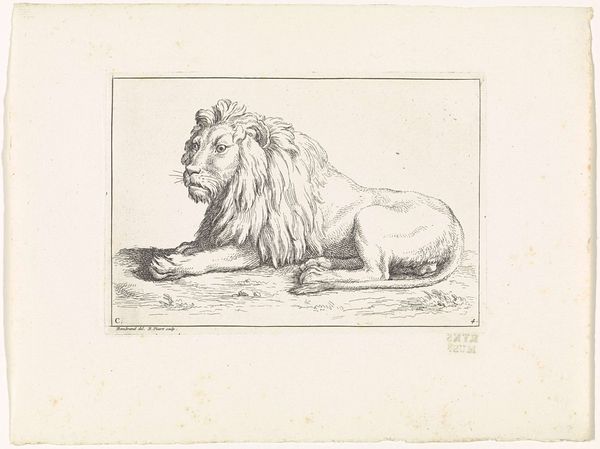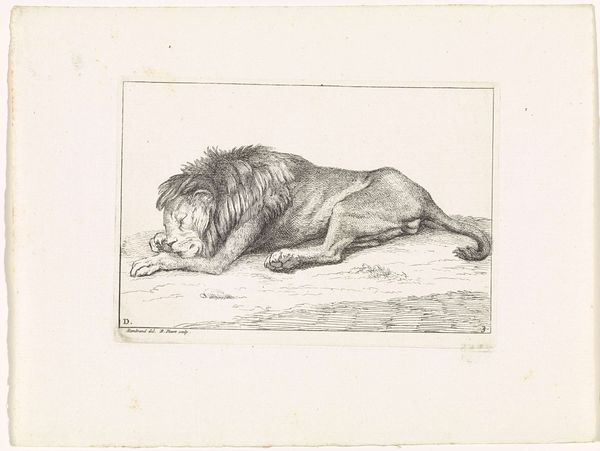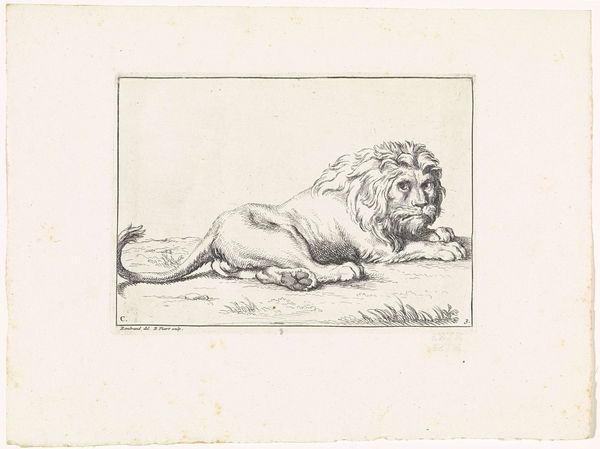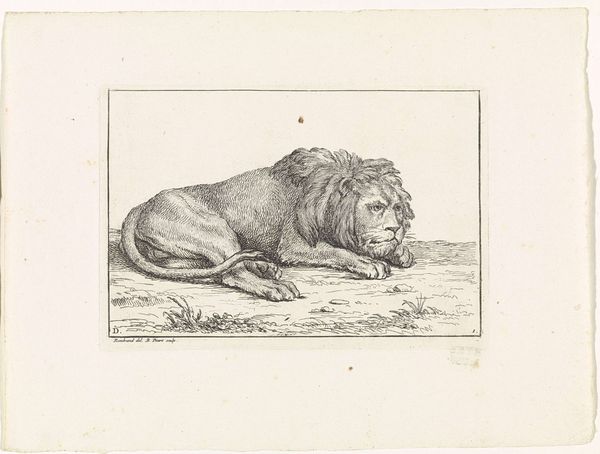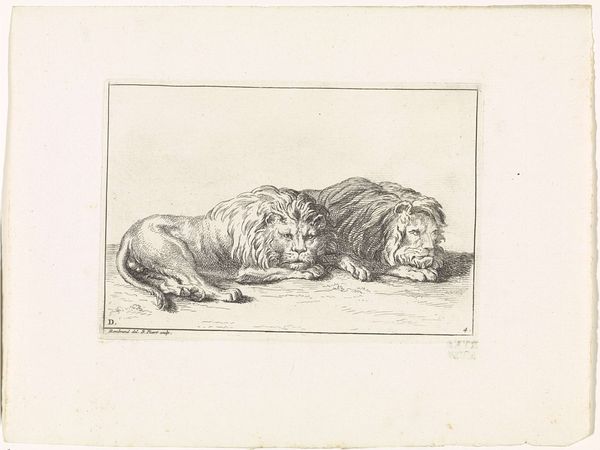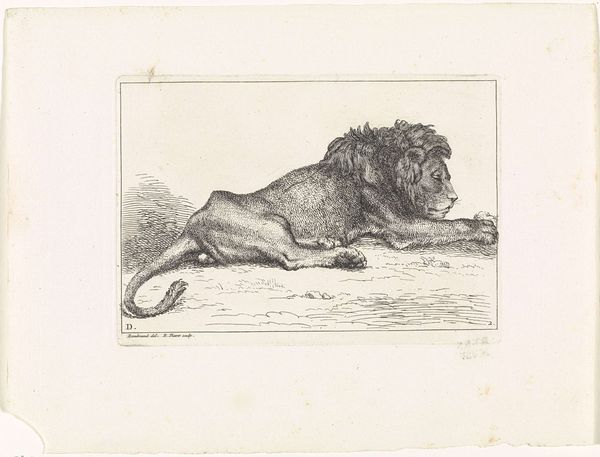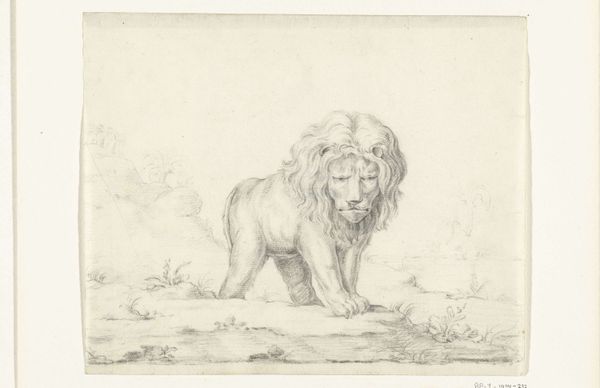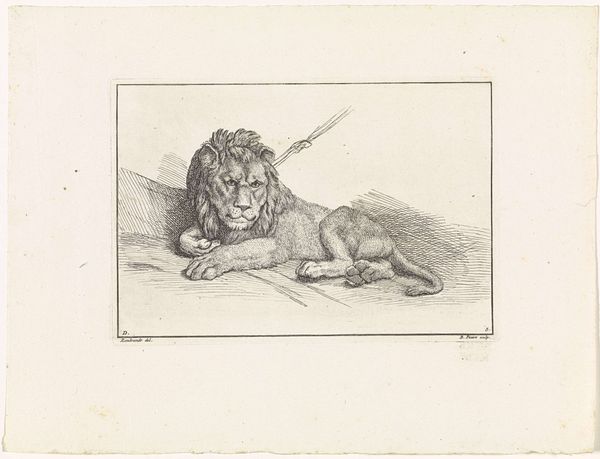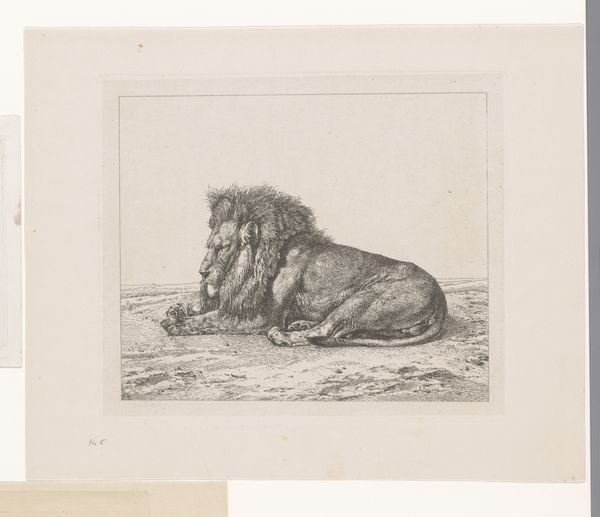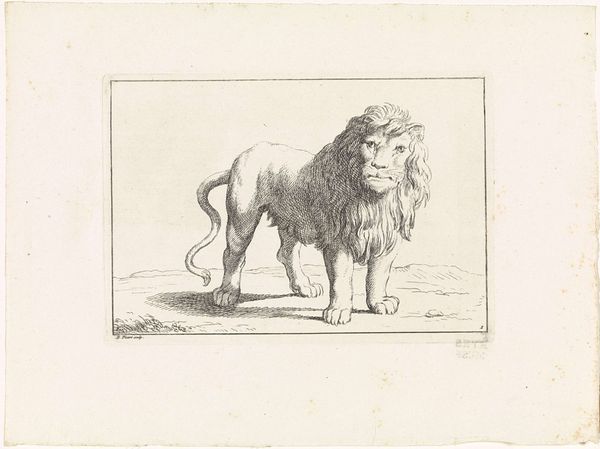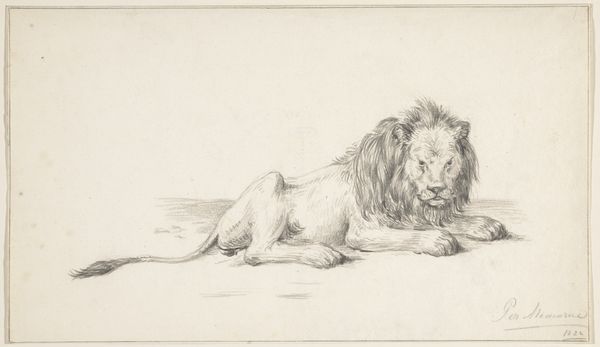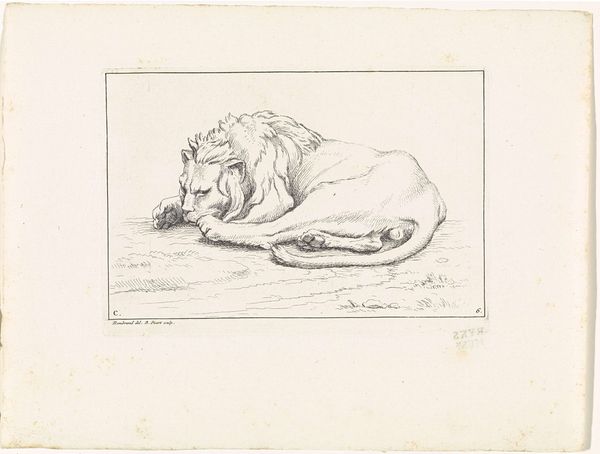
drawing, etching, ink
#
drawing
#
baroque
#
animal
#
etching
#
landscape
#
etching
#
ink
Dimensions: height 121 mm, width 174 mm
Copyright: Rijks Museum: Open Domain
Curator: Before us lies "Landscape with Lying Lion," a 1729 etching and ink drawing by Bernard Picart, housed right here at the Rijksmuseum. Editor: My immediate reaction is one of gentle melancholy. The lion, usually a symbol of power, looks so…resigned. It almost seems domesticated here. Curator: The fascinating thing about Picart is how his work engaged with both aristocratic and more public audiences. This piece certainly participates in that tension. Representations of lions often signaled power and majesty, used to legitimize rulers. But look at how that message is softened here, almost made approachable. Editor: Absolutely, that domestication I noticed is key. Even the landscape feels muted, like a stage set for the lion’s ennui. What is it about the lion as a symbol that resonates so strongly? Curator: Well, in Picart's time, and continuing earlier traditions, lions were a complex symbol, evoking both royal authority and more primal, even bestial qualities. Exhibitions of exotic animals were social spectacles. By presenting a 'landscape' the artist gives us a setting we're meant to contemplate - almost allegorical. The lion almost seems caged in by our expectations. Editor: You’re right; I see a hint of caged spirit in his posture. It makes me think about how we project our human ideals onto animals, lionizing them in ways that serve our own narratives. Perhaps the lion feels weary from bearing that weight through culture. Curator: Indeed. And Picart was no stranger to political allegory in his images, so maybe there's commentary on power at play here as well. Power restrained, power subdued. It would certainly resonate in his politically turbulent era. Editor: It's powerful how a seemingly simple sketch of a lion lying down can ignite so many paths of inquiry. A true testament to the multilayered symbolic power art possesses. Curator: It demonstrates just how deeply enmeshed images are in a historical dialogue - continuing to stimulate us with new insights centuries later.
Comments
No comments
Be the first to comment and join the conversation on the ultimate creative platform.
